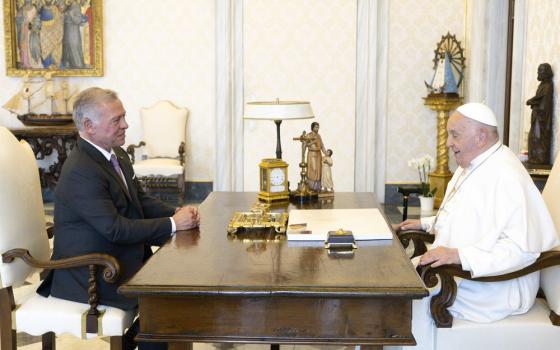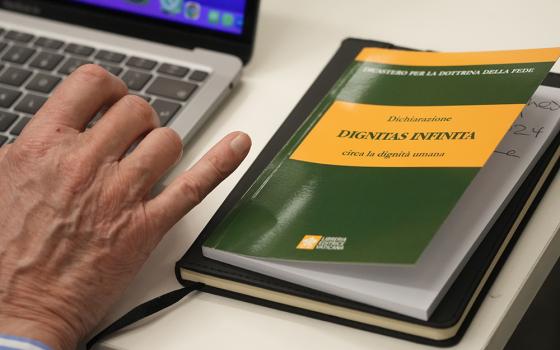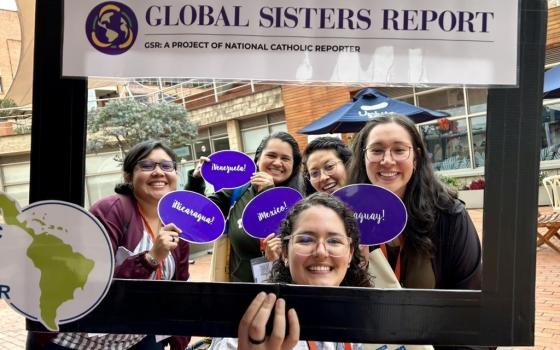
Unsplash/Patrick Schneider
At age 66, long divorced and childless, away from the church for almost 40 years, I was drawn to a Catholic parish just down the street in my Chicago neighborhood.
This progressive parish was well-known throughout the city for its warm welcome of all kinds of Catholics: long-lapsed or lifelong practitioners; gay or straight; young and old; married or divorced; those with an unshakeable belief in God and those like myself who had never really known God. Or had known only the dark punishing God of their 1950s childhoods.
Starting in 2009 — and for the next three years — I grew to have faith in this particular church community, becoming an official parishioner, joining parish groups and committees, meeting some truly inspiring priests and laypeople.
But my faith in the capital “C” Church didn’t come with it. Nor did I feel a deep understanding of, or connection to, God, Jesus or doctrine. Which is why when the recession forced a move to a more affordable part of the city, I gradually fell off the church wagon, and without missing a beat resumed my lapsed status.
Then last year, on my 73rd birthday — All Saints’ Day, no less — I had a good old spiritual crisis. While wandering through a local nature preserve on that crisp November morning, I asked myself two pretty hard questions:
What’s your life been about so far?
What’s it going to be about from this point on?
No images came to mind as I asked each question, just two pretty strong feelings: sharp regret on looking back, an empty vagueness looking forward.
And so just three weeks later, I permanently ended my lapsed status and back to church I went, this time to a nearby parish known for its diversity and for being a little more traditional in its practices, and I went into the deep water.
This is where I am and this is what I’ve learned about growing old: Try as we might, most of us cannot avoid taking stock of our long-lived lives. We reflect on who we’ve been over the course of many decades: in our relationships, our work, and in the various communities that we both served and were served by.
For me, once back on my knees in church the first time, I finally realized how much I really needed a faith community, how lonely I’d felt over all those lapsed years without it. As if on my own I could be a more loving, patient, generous and forgiving person. As if on my own I could heal my own troubles and distresses, the innumerable losses and confusions.
More fundamentally, though, as I recently told a friend, I just did not want to be in charge of my life anymore, at least not solely in charge, especially of what’s left of it. Time to lay that burden down — or at least begin to share it. Or resume sharing it, as I’d begun doing in that first faith community eight years earlier.
This time, I needed to go even bigger, to reach beyond the welcoming embrace of the community and seek out the Source that inspires, guides and gives members their enduring values.
Advertisement
I went looking for Jesus, the Source made flesh. Or as the hymn “All Are Welcome” has it, “Here the love of God, through Jesus, is revealed in time and space.”
Almost a decade before my first return to church, I’d actually stumbled on a Jesus I felt I wanted to know, one disguised as an imaginary cat following Anne Lamott home from church one day. This pursuit is heart-achingly described in her 1999 book, Traveling Mercies: Some Thoughts on Faith, when she was at one of the lowest points in her drug- and alcohol-addicted life. And yet, as she was about to close the door on whom she knew to be Jesus, she surrenders:
“I took a long deep breath and said out loud, ‘All right. You can come in.’ So this was my beautiful moment of conversion.”
Still, as much as I loved Lamott’s book and the description of her conversion experience, I didn’t go searching for Jesus until a few months ago, starting with Jesus: A Pilgrimage by Jesuit Fr. James Martin. While very different from Lamott’s in both tone and story, the book is also a personal account of Martin’s relationship with Jesus. And what immediately drew me in was the title of his introduction, “Who Is Jesus?”
Precisely what I want to know.
I’m halfway through the 500-plus-page book, but have re-read more than once the chapter on parables. As a writer, I know that stories, real or fictionalized, are the vehicle that human beings use to both learn from, and connect to, each other. Two parables that Martin examines stand out for me, and possibly serve as those “vehicle stories.” They are the stories of the lost sheep and of the prodigal son.
Because here’s the question I’ve been asking myself: Was I lost and now am found? And, if so, who came looking for this wayward, wandering me?
Or, hungry for reconnection, did I begin this faith journey thinking it was my big idea all along? Only to be met, and embraced, halfway into it?
And, if so, by whom?
[Carol LaChapelle is a Chicago-based writer, teacher, and author of Finding Your Voice, Telling Your Stories.]










